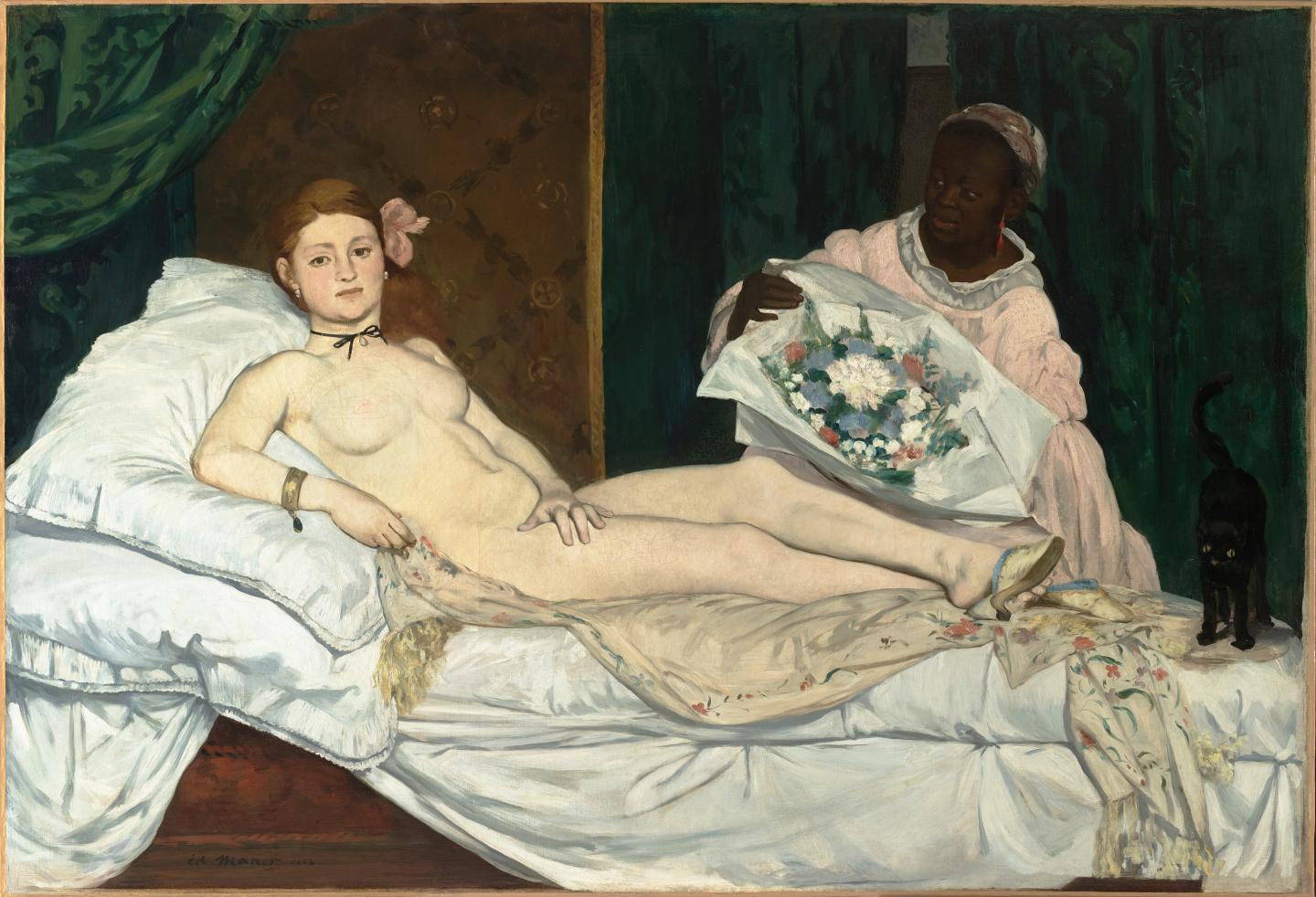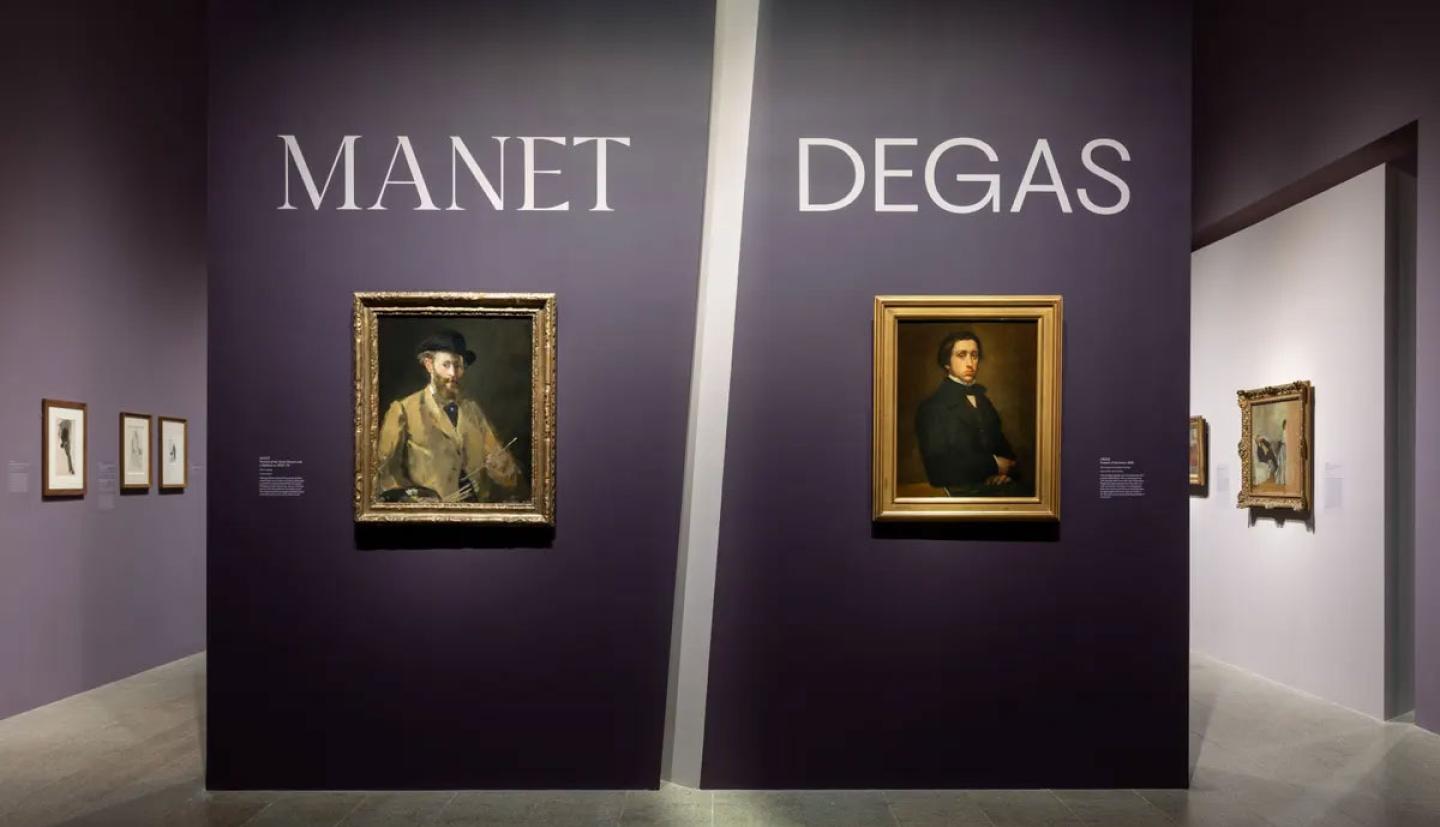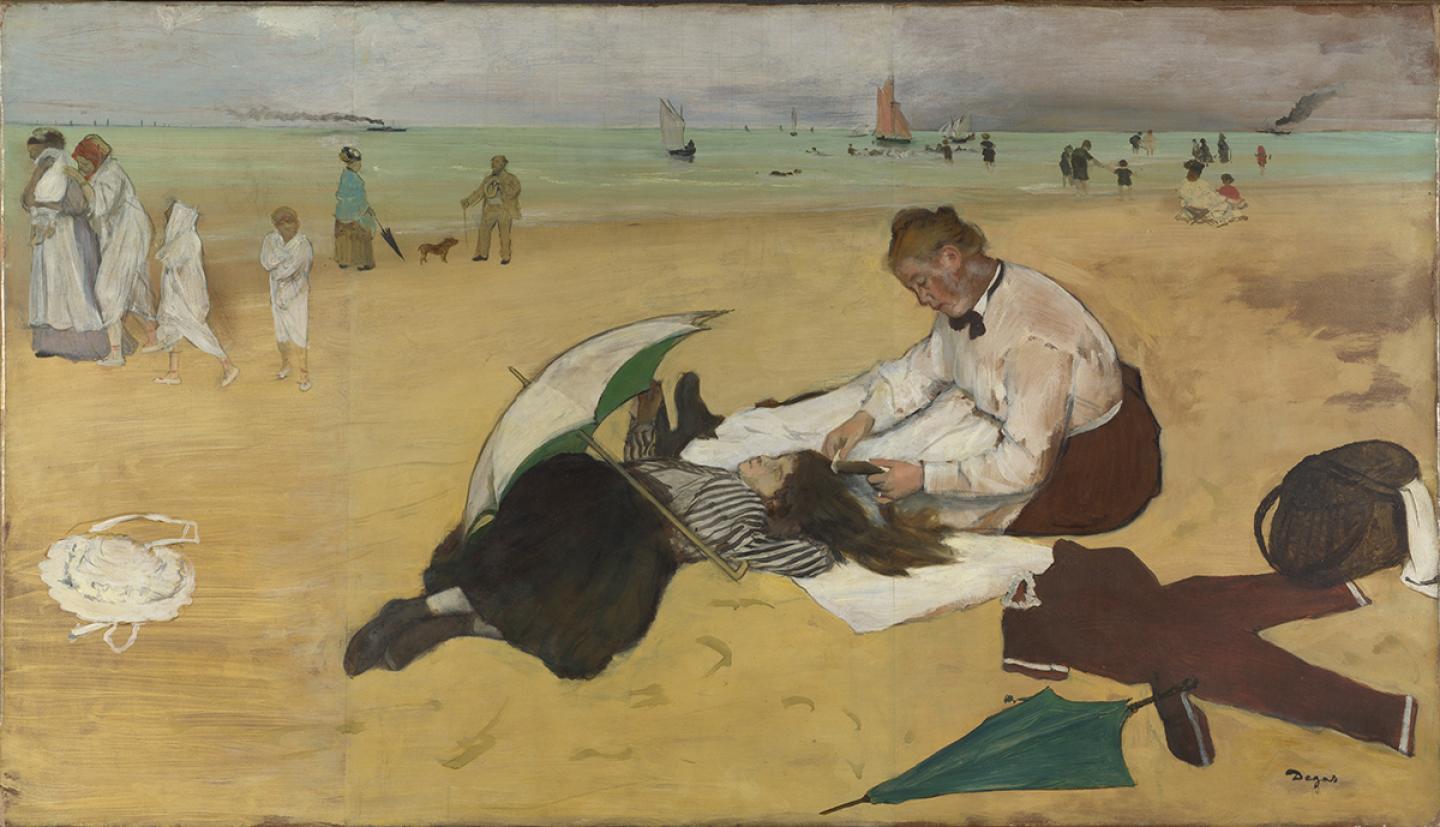“Olympia” Unveiled
Ashley Miller Dunn ‘02 played a pivotal role in bringing an iconic French painting to the U.S.
BY LARRY CLOW
Ashley Dunn ’02 has had plenty of “pinch me” moments since she joined the Metropolitan Museum of Art’s staff in 2016. An associate curator responsible for 19th century French drawings, prints and illustrated books, Dunn has delved deeply into the museum’s holdings. She was part of the curatorial team for a 2017 exhibition of sculptor Auguste Rodin’s most iconic works, including “The Thinker” and “The Hand of God,” and she curated a retrospective of Eugène Delacroix’s drawings in 2018.
For Dunn, few of those moments compare to when she helped oversee the unpacking and installation of Édouard Manet’s painting “Olympia” earlier this year.
The painting of a courtesan — reclined in bed, nude, and gazing frankly at the viewer — caused a scandal when it debuted in Paris in 1865. Part of the Musée d’Orsay collection, “Olympia” rarely leaves France. But Dunn was there to welcome the iconic work of art to this side of the Atlantic, the first time it has been in the United States.
“As it was being unpacked and checked, and then seeing it installed on the wall, I had goosebumps,” Dunn says.

Édouard Manet (French, 1832-1883), Olympia, 1863-65, Oil on canvas 51 3/8 x 75 3/16 in., Musée d’Orsay, Paris (RF 644), Photo © RMN-Grand Palais / Patrice Schmidt / Art Resource, NY
The painting is on display as part of “Manet/Degas,” an exhibit that explores the friendship, and sometimes rivalry, between Manet and Edgar Degas, both of whom shaped the course of 19th century French art. Dunn was part of the curatorial team that brought the exhibit to life — a collaboration between The Met and the Musée d’Orsay that took four years to stage.
Dunn’s interest in French art, however, stretches back to her time at St. Paul’s School. “It was through French language classes with Madame Windsor that I became interested in French art,” she says. “She introduced us to some of the major literary figures, like Beaudelaire and Zola, who continue to be very present in my work on 19th century art.”
While an undergraduate at Emory University, Dunn explored a variety of subjects and career options. The only constant in her studies were French language classes. She decided to major in French, and spent her junior year studying in Paris, visiting the Musée d’Orsay and the Louvre and eventually taking an internship at the Musée d’Art Américan Giverny.
“That opened my eyes to this world,” says Dunn, who went on to earn a master’s degree in art history at Oxford and a doctorate in the discipline from Northwestern. “It captured my imagination — there was the language aspect, but also the research, and the creative enterprise of mounting an exhibition and making a visual experience for people in the galleries. That was when I realized this could be a very fulfilling career.”
There are few “typical” days as a curator at The Met, according to Dunn. Curating an exhibit like “Manet/Degas” is an effort that involves scores of collaborators, from the designers who layout the exhibit’s physical space and the installers who bring it to life, to the many people behind the scenes who arrange loans from other museums and figure out the logistics of shipping. “It takes a huge team of people,” Dunn says.
The exhibit debuted at The Met in September, and the response has been enthusiastic.

The Manet/Degas exhibit at the Metropolitan Museum of Art in New York, New York. Photo by Anna-Marie Kellen

Edgar Degas (French, 1834–1917), Beach Scene, ca. 1869–70, Oil (essence) on paper on canvas 18 11/16 x 32 5/8 in. (47.5 x 82.9 cm), The National Gallery, London, Sir Hugh Lane Bequest, 1917. In partnership with Hugh Lane Gallery, Dublin (NG3247)
“I’m truly enjoying having this exhibition here. It’s a full-time job just fielding tours, and it’s a great joy to share this with so many people.” One recent tour was designed for families with children, and Dunn, who welcomed daughter Isla in February 2022 with husband Will Dunn ’02, had to rethink how she would present such a massive exhibit to a young audience: “I made it less about me talking and more about asking them questions and helping them see the distinction between the two artists. They gave me some very sophisticated observations.”
Manet/Degas runs at the Met through Jan. 7, 2024.